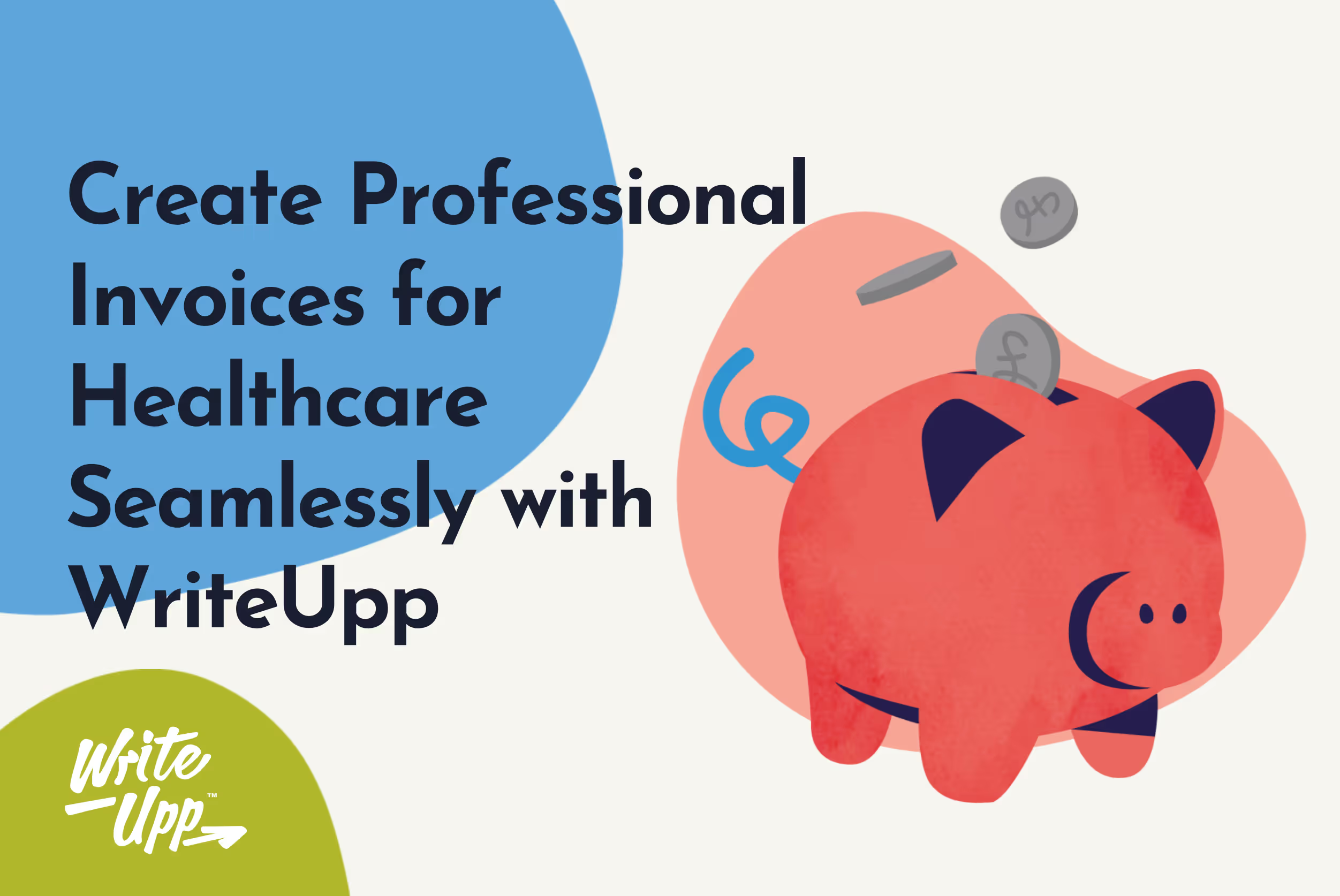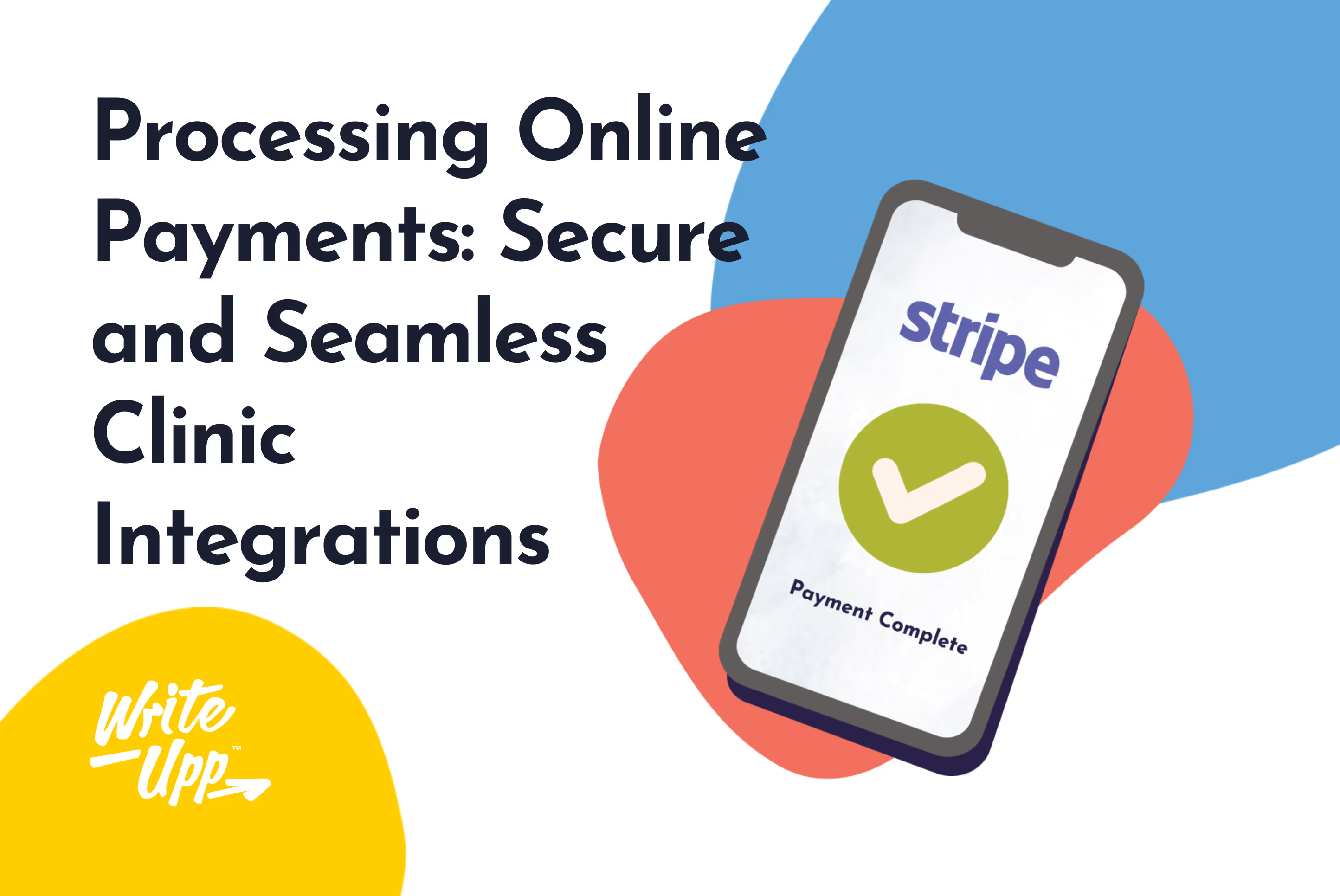We recently spoke to Healthcare copywriter and email marketing strategist Catherine Smith on The Healthy Practice podcast from WriteUpp.
Email marketing can seem daunting at first, but don’t worry! In this podcast episode and the blog post that follows, we cover everything you need to know, from content and strategies to being sensitive to client’s needs and communication choices.
You can watch the full episode here:
https://www.youtube.com/watch?v=UPEuPbL-D2s&t=1542s
Follow more of Catherine’s fantastic work on LinkedIn.
What is Healthcare Copywriting?
Healthcare copywriting isn't just about writing; it's about creating a bridge of understanding and trust between healthcare providers and their audience, be it fellow professionals or clients seeking guidance. This form of communication demands a deep dive into the audience's mindset - understanding the complexities of a professional's daily challenges and the anxieties and questions that patients often grapple with.
Transforming complex medical jargon into engaging narratives resonates with anyone, whether they're seasoned therapists or people navigating their health journeys. This kind of writing has become the heartbeat of effective healthcare marketing, particularly in the digital sphere, where email campaigns become more than just messages – they become conversations.
Picture this: a healthcare professional opens an email and finds exactly the insights they need for better patient care, or a patient reads a newsletter and feels like it's speaking directly to them, guiding them towards better health choices. That's the power of well-crafted healthcare copywriting – it informs, empowers, and connects, making the complex world of healthcare a little more accessible and a lot more human.
Understanding Your Target Audience
Really listen to the words [your clients] use and keep track of them. That's like marketing gold for the words you want to use in your copy.
Catherine Smith on The Healthy Practice podcast.
The very first place you should start with your marketing efforts is in target market research. Without knowing who you're addressing, your content may not connect effectively:
- Analyse your existing customer base to understand common characteristics such as demographics and specific healthcare needs. Use surveys or interviews to gain insights into your audience's challenges and motivations.
- Analyse your target audience's interactions with your website, blog, and social media to identify popular topics and preferred content types. Also, utilise any email marketing data to track open, click-through, and conversion rates, focusing on the most engaging emails and subject lines.
- Tailor your messaging to resonate with your audience. Use language and terminology they understand and avoid unnecessary jargon. Focus on their pain points, offering solutions and advice.
You can also conduct surveys or polls to understand their communication channel preferences, preferred email frequency, and content interests. Stay current with industry trends in health and wellness, digital marketing, and content consumption, like video marketing and mobile apps. Continuous research and adaptation are key to creating resonant healthcare copywriting and email marketing campaigns.
Utilising Segmentation To Create Relevant Messages
Segmenting is really a good thing to do... It's one of the best ways to help people, but it's also one of the best ways to get better ROI.
Catherine Smith on The Healthy Practice podcast.
Segmentation enhances relevance and engagement by dividing your email list into specific groups based on demographics, interests, behaviours, or past interactions. Personalised emails tailored to each segment's needs increase engagement and conversion rates, as messages directly address each group's unique concerns and motivations.
This approach also optimises email timing and frequency, catering to different segment preferences and reducing unsubscribe rates. Segmentation is effective for targeted campaigns, such as promoting medical devices to professionals or wellness tips to health-conscious consumers, leading to increased lead generation and conversions.
To implement segmentation, analyse your email list to identify common characteristics, then create messages aligned with each segment's preferences. Continuously monitor campaign performance, adjusting strategies based on metrics like open and click-through rates.
Creating an Engaging Email Message
Email marketing is a relationship-building tool. It's not one-to-many. It's one-to-one because when the person on the other end opens it, they have a one-to-one relationship with the person who sent the email.
Catherine Smith on The Healthy Practice podcast.
In healthcare email marketing, engaging messages capture attention and prompt action. Here are some of our essential tips:
Choosing the Right Subject Line
Choosing the right subject line for healthcare email marketing involves a blend of empathy, understanding your audience, and strategic thinking:
- Understand your audience: Know your audience's specific needs, concerns, and interests. Are they healthcare professionals, patients, or caregivers? Tailoring your subject line to address their unique perspective is key.
- Clarity and relevance: Ensure your subject line clearly reflects the content of the email. Misleading or vague subject lines can erode trust. For instance, if you share mental health tips, a subject line like “5 Strategies to Manage Anxiety” is clear and direct.
- Conciseness: Keep it short and sweet. Aim for about 6-10 words or under 50 characters to ensure your subject line is fully visible on most devices, especially mobile phones.
- Test and optimise: Use A/B testing to trial different subject lines with a small segment of your audience to see which performs better in terms of open rates. This can provide valuable insights into what resonates with your audience.
- Avoid spammy language: Avoid words that trigger spam filters, such as “free”, “guarantee", or excessive exclamation points and all caps.
- Emotional appeal: Depending on your content, using emotional or empathetic language can be effective, especially in healthcare. A subject line like “Finding Hope in Therapy” can connect on a personal level.
- Highlight value or benefits: Let your audience know what they’ll gain by opening the email, such as “Transform Your Practice with These Management Tools.”
- Compliance and sensitivity: Especially in healthcare, ensure your subject lines comply with privacy regulations and are sensitive to the content. Do not reveal private health information or use insensitive language.
Crafting Compelling Content
Your natural tone of voice... that works really well. You're trying to put more of you into your emails so they know who you are.
Catherine Smith on The Healthy Practice podcast.
Crafting compelling content in healthcare copywriting and email marketing involves a few key strategies:
- Use your own voice and personality: always!
- Research your readers’ demographics, needs, interests, and challenges to create tailored content.
- Provide insights, actionable tips, or in-depth analysis relevant to your audience.
- Use short paragraphs, bullet points, subheadings, and text formatting for easy reading.
- Incorporate stories, anecdotes, or case studies to make the content relatable and memorable.
- Enhance content with images, videos, infographics, charts, and graphs for engagement.
- End with a persuasive CTA that guides readers to the next step, whether it’s subscribing, booking an appointment, or buying a product.
Developing a Comprehensive Email List Strategy
Never ever buy an email list. You are trying to communicate to people who have given you permission to do so.
Catherine Smith on The Healthy Practice podcast.
Growing an email subscriber list is a great tool for successful healthcare marketing. Make sure you tell your readers, clients and social media followers that you have one and ask them to subscribe.
Build your email list by offering valuable content like ebooks, whitepapers, or informative articles, enticing readers to subscribe for more. Utilise your existing contacts and networks, encouraging them to share your content and subscribe. Also, leverage social media to promote your content and direct followers to subscribe to your email list. Engaging calls to action and well-designed landing pages can enhance subscription rates.
Optimise your social media profiles with keywords, visuals, and clear descriptions, and share content like blog articles and videos to attract email list subscribers. Also, explore partnerships and collaborations with healthcare professionals to reach a broader audience and gather more contacts. You can also take advantage of offline events like conferences or trade shows to gather contacts face-to-face.
Always adhere to ethical standards: ensure all marketing materials are accurate, transparent, and respectful of patient privacy and confidentiality. Avoid exaggerated claims or misleading information. Respect data privacy laws and obtain explicit consent when collecting personal information. Ethical marketing builds trust and credibility, fostering long-term relationships with your audience.
https://www.youtube.com/watch?v=UPEuPbL-D2s&t=1549s
Leveraging Practice Management Software For Efficient Messaging Delivery
Enhance your efficiency and outreach with WriteUpp, a practice management software designed to streamline all aspects of private practice management. Our all-in-one platform simplifies email and SMS communications, allowing for the effortless creation and distribution of customised, personalised messaging.
Our user-friendly interface allows healthcare providers to design email templates easily and recognises the importance of mobile responsiveness, ensuring emails look great on any device.
WriteUpp's capabilities extend beyond email and SMS communications. It’s an invaluable tool for managing all aspects of your practice, with features including
- Round-the-clock online client appointment scheduling
- Eradicating repetitive & time-consuming tasks
- Insights into your business’s financial health
- Eliminating paper
- Improving your client’s experience
- Simplifying your compliance with key regulations like GDPR
- Reducing the threat of virus transmission
You can grab us for a live chat if you have any questions about what an integrated practice management solution can do for you and your practice.
The button is just there in the bottom right corner of your screen.



Join over 50,000 clinicians that we've helped using WriteUpp
Start my free trial






